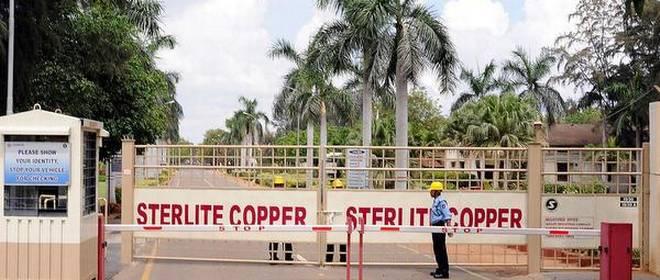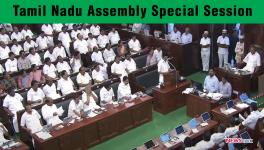Madras HC Rejects Vedanta Plea to Reopen Sterlite Plant in Thoothukudi

“THE Tamil Nadu Government and the Tamil Nadu Pollution Control Board (TNPCB) would be well justified in invoking the Precautionary Principle bearing in mind the aspect of sustainable development. If applied, facts speak for themselves, the petitioner needs to be closed, and permanently sealed,” held Justices T.S. Sivagnanam and V. Bhavani Subbaroyan of the Madras High Court, in a recent judgment.
The bench’s ruling came while dismissing the plea of Vedanta Limited to reopen its Sterlite Copper Smelter Plant at Thoothukudi, shut since May 23, 2018, following an order of the TNPCB.
Vedanta has been operating the plant since 1996. But, various approvals and consents issued by the regulatory authorities to it had not been subjected to such detailed scrutiny as the High Court did.
The bench’s judgment is significant. For the first time, a court has taken a tough stand against an industrial giant which showed no compunction in violating conditions imposed for protecting the environment with impunity.
The bench’s observations are also significant because it upholds the right to protest against big projects ignoring environmental concerns, and the government’s duty to defend such a right.
For the first time, a court has taken a tough stand against an industrial giant which showed no compunction in violating conditions imposed for protecting environment with impunity.
On February 18 last year, the Supreme Court set aside the National Green Tribunal (NGT)’s direction to reopen the plant on the ground of maintainability, because the NGT has no general power of judicial review. The Supreme Court had then asked Vedanta to seek relief from the Madras high court.
On March 29, 2013, the TNPCB, under Section 31-A of the Air (Prevention and Control of Pollution) Act, 1981 had directed the closure of the plant, following complaints of irritation in the eye and suffocation from residents living in areas adjoining the plant. Sterlite had then challenged the order before the NGT.
The NGT, in its order on August 8, 2013, held that the order of closure of the plant suffered from the vice of arbitrariness. “There should be a direct nexus between the leakage of gas, the source of leakage and its effect/impact on ambient air quality and public health; these are the sine qua non and not conditions to be satisfied post-order,” the NGT had ruled then.
The NGT reasoned that stringent proof and specific scientific data are the very crux of passing such direction and absence thereof would vitiate the action taken. A punitive action in the garb of preventive measure could not be sustained, it said.
Polluter Pays Principle Evoked
Before the NGT gave its order, the Supreme Court had directed the company to pay Rs.100 crore, on the basis of the “Polluter Pays” principle, for operating the plant without the consent of the TNPCB for some period.
Although the 2018 closure was a result of the outrage following the death of 11 persons in the police firing at Thoothukudi to contain public protests against the plant’s operations, the TNPCB had then invoked the Water (Prevention and Control of Pollution) Act, 1974 to justify its order of closure.
The bench’s observations are also significant because it upholds the right to protest against big projects ignoring environmental concerns,
The manufacture of copper is classified as ‘red category’ industry signifying that the process is highly polluting and the effluents are hazardous.
The plant had secured due environment clearances from both the Centre and the State in 1995. The TNPCB granted consent on May 22, 1995, to manufacture 234 tonnes of blister copper per day and 638 tonnes of sulphuric acid per day. This was increased to 391 tonnes of blister copper per day and 1060 tonnes of sulphuric acid per day in October 1996. On January 1, 1997, the company commenced production. Since then, there have been a few temporary closures of the plant, following orders by the TNPCB, or by the high court. Its reopening too was directed either by the high court or by the NGT. The company applied for the expansion of its production capacity from 391 tonnes of copper per day to 900 tonnes of copper per day.
A public hearing was held on January 10, 2003, on the issue. Subsequently, both the Centre and the State granted clearance for expansion for 2400 tonnes of copper per day, without conducting a public hearing.
TNPCB imposed conditions with directions to dispose of the waste gypsum stored by the company.
Sterlite Arguments
Sterlite argued before the High Court that orders of closure did not allege any pollution. Even if there is pollution, if it is remediable, the closure should not be resorted to, it submitted.
Sterlite is the largest manufacturer of copper. If shut down, India would have to import copper at a high cost, it argued.
There are 63 industries in the SIPCOT Industrial Complex, Thoothukudi, which are red category industries. NGT ordered source apportionment study. Without such a study, Sterlite could not be blamed as the sole contributor to pollution, it contended. Besides, the company used the fact that the plant was a zero discharge plant in its favour to show that there was no effluent released by it into the sea.
To state that on payment of Rs.100 crore as compensation, all the past misconducts stood wiped off was rejected as fallacious by the high court.
For the first time in April 2018, there was an allegation of groundwater pollution. Groundwater analysis report showed that it was within permissible parameters, it told the high court.
First, the High Court rebuffed Sterlite’s attempt to argue that its past transgressions could not be reopened because the Supreme Court had given it a ‘clean chit’ in 2013. The High Court held that the theory of washing off could not be applied because the Supreme Court judgment shows Sterlite polluted the environment and violated the orders of consent. To state that on payment of Rs.100 crore as compensation, all the past misconducts stood wiped off was rejected as fallacious by the high court.
More important, in 2013, the Supreme Court granted liberty to the TNPCB to pass orders including an order of closure.
The Supreme Court thought it fit to grant liberty to Sterlite to remedy the damage to the environment, and therefore, permitted reopening of the plant subject to fulfillment of conditions. There was no complete exoneration of Sterlite of the damage caused. Therefore, the question of Sterlite being vexed twice would not arise, the High Court held.
Second, the High Court held that Sterlite could not have been permitted to establish a red category industry in a general industrial use zone or in an agriculture use zone.
A red category industry generating hazardous substances cannot be located in any other location except in special industrial and hazardous use zone.
In Meelavittan village, where the plant is located, there is no controlled industrial use zone.
The petitioner could not have been permitted to establish a red category industry in a ‘general industrial use zone’ or in an ‘agriculture use zone’, the high court found.
A red category industry generating hazardous substances cannot be located in any other location except in special industrial and hazardous use zone.
In Thoothukudi district, only in two villages lands have been earmarked as special industrial and hazardous zone, namely, Swaminatham and Palayakayal. Therefore, there is a serious error in the location of the petitioner industry in the land in question, the high court held.
Third, on a conjoint and plain reading of the various provisions of the Water Act, it is clear that the TNPCB may make, vary or revoke any order for prevention, control or abatement of discharges of waste into streams or wells, the High Court held.
The State Government invoked its power under Section 18(1)(b) of the Water Act in larger public interest and Article 48A which mandates the State to endeavour to protect and improve the environment, the bench held.
Administration turns blind eye
Fourth, the bench was dismayed that the officials of the District Administration turned a blind eye to the illegality probably unable to do anything considering the magnitude of the petitioner. The officials of the TNPCB were equally culpable, the bench held.
The High Court found that Sterlite indiscriminately dumped copper slag outside the unit, and in certain Patta lands. The TNPCB had directed the plant to construct a physical barrier between the river and the slag landfill so as to prevent the slag from reaching the river. The court found that Sterlite’s control over slag continued though it is shown as sold to a private party. The High Court held that Sterlite could not disown its responsibility in the safe disposal of slag and the fact that a huge quantity of slag was dumped indiscriminately adjoining a river will go to show that it is a chronic defaulter.
The High Court held that Sterlite could not disown its responsibility in the safe disposal of slag….
The condition while granting consent for establishment of the plant under Section 25 of the Water Act was that Sterlite should dispose of the solid waste generated from the plant, like slag for sandblasting, for landfilling and road-building activities, then and there to avoid the accumulation of solid waste within the premises.
The High Court held that obstruction of the river amounted to a violation of a consent condition. By obstructing the flow of water in a river or stream, resulting in flooding and other consequences is also a form of pollution, it said.
Court Observations
Fifth, the High Court made it clear that the green belt requirement ought to have been increased while considering the application for enhancement in production capacity.
If the TNPCB had genuinely acted in the public interest, they would have rolled back the order reducing the green belt requirement to 25m and should have imposed a condition that the increased production capacity should be rolled back or the petitioner should have been directed to cease operation till completion of the requirement, it observed. Non-compliance with the green belt requirement is a good and sufficient reason to not permit the petitioner to continue any further, it held categorically.
The development of a green belt consisting of three-tier along the periphery of the project with native species is the most important guideline for any type of industry. The green belt minimises the build-up of pollution levels in an urban and industrial areas by acting as pollution sinks, as it will absorb pollutants released from the industrial activity into the atmosphere and helps in effective pollution control.
The importance of establishing a green belt, developing it as per the norms, maintaining the same, and endeavouring to increase the green cover is a continuing obligation on a polluter.
Upon an increase in production, the waste generated in all categories correspondingly increases. A natural consequence is an increase in pollution.
The importance of establishing a green belt, developing it as per the norms, maintaining the same, and endeavouring to increase the green cover is a continuing obligation on a polluter.
Sterlite argued that non-mentioning about the green belt requirement in the renewal of consent order is to be taken as deemed to have been complied with. The High Court held that it is a thorough misreading of the condition of consent, as such condition is a continuing condition and regular maintenance upkeep and replacement of the trees is essential. “The endeavour should be to surpass the minimum requirement as stipulated in the guidelines. The attitude of the petitioner in this regard is unbecoming of a corporate Mayor,” the bench observed.
Sixth, the High Court held that increased production would mean an increased generation of waste, which obviously would require a larger extent of land. The failure to disclose the correct details has led to an order being passed by the Ministry of Environment and Forests granting environmental clearance on the ground that the petitioner possessed 172.17 ha.
Lastly,the High Court found that Sterlite did not take adequate precautions while transporting the copper concentrate from the port premises to their factory for a distance of about 18 km.
Passing strictures on the TNPCB, the High Court said it failed to discharge its duties diligently. “Nothing prevented it from approaching the court by way of an appropriate application appraising the facts and the need to monitor the petitioner,” the bench observed.
The Supreme Court in the decision in Justice K. S. Puttaswamy versus Union of India has recognised the right to question, the right to scrutinise and the right to dissent.
The larger and more prosperous the enterprise, the greater must be the amount of compensation payable by it for the harm caused on account of an accident in carrying on of the hazardous or inherently dangerous activity by the enterprise, the bench held citing case law on the subject.
If there is uncertainty in scientific opinion, it would be appropriate to err on the side of caution. There is definitely a scientific uncertainty on the effect of the copper slag as to how the beneficial uses can be undertaken, the bench reasoned.
The Supreme Court in the decision in Justice K. S. Puttaswamy versus Union of India has recognised the right to question, the right to scrutinise and the right to dissent. The citizen has a fundamental right to have a clean and healthy environment and the doctrine of waiver can have no application in this regard, the bench made it clear.
The Madras high court’s landmark judgment in the case is likely to influence the future environment litigation in the country significantly.
(The author is a Senior Journalist based in Delhi who aims to look beyond and behind the headlines.)
This article was first published in The Leaflet.
Get the latest reports & analysis with people's perspective on Protests, movements & deep analytical videos, discussions of the current affairs in your Telegram app. Subscribe to NewsClick's Telegram channel & get Real-Time updates on stories, as they get published on our website.
























